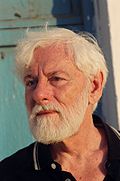That was the situation at the beginning of the experiment: the Palestinian infrastructure destroyed, practically no means of production, no work for the workers. All in all, an ideal setting for the great "experiment in hunger".
THE IMPLEMENTATION started, as mentioned, with the stoppage of payments.
The passage between Gaza and Egypt was closed in practice. Once every few days or weeks it was opened for some hours, for appearances' sake, so that some of the sick and dead or dying could get home or reach Egyptian hospitals.
To round off the picture, the Israeli Air Force bombed the only power station in the Strip, so that for a part of the day there is no electricity, and the water supply (which depends on electric pumps) stops also. Even on the hottest days, with temperatures of over 30 degrees centigrade in the shade, there is no electricity for refrigerators, air conditioning, the water supply or other needs.
In the West Bank, a territory much larger than the Gaza Strip (which makes up only 6% of the occupied Palestinian territories but holds 40% of the inhabitants), the situation is not quite so desperate. But in the Strip, more than half of the population lives beneath the Palestinian "poverty line", which lies of course very, very far below the Israeli "poverty line". Many Gaza residents can only dream of being considered poor in the nearby Israeli town of Sderot.
What are the governments of Israel and the US trying to tell the Palestinians? The message is clear: You will reach the brink of hunger, and even beyond, if you do not surrender. You must remove the Hamas government and elect candidates approved by Israel and the US. And, most importantly: you must be satisfied with a Palestinian state consisting of several enclaves, each of which will be utterly dependent on the tender mercies of Israel.
AT THE moment, the directors of the scientific experiment are pondering a puzzling question: how on earth do the Palestinians still hold out, in spite of everything? According to all the rules, they should have been broken long ago!
Indeed, there are some encouraging signs. The general atmosphere of frustration and desperation creates tension between Hamas and Fatah. Here and there clashes have broken out, people were killed and wounded, but in each case the deterioration was halted before it became a civil war. The thousands of hidden Israeli collaborators are also helping to stir things up. But contrary to all expectations, the resistance did not evaporate. Even the captured Israeli soldier has not been released.
One of the explanations has to do with the structure of Palestinian society. The Hamulah (extended family) plays a central role there. As long as one person in the family is working, the relatives, too, do not die of hunger, even if there is widespread malnutrition. Everyone who has any income shares it with all his brothers and sisters, parents, grandparents, cousins and their children. That is a primitive system, but quite effective in such circumstances. It seems that the planners of the experiment did not take this into account.
In order to quicken the process, the whole might of the Israeli army is now being used again, as from this week. For three months the army was busy with the Second Lebanon War. It became apparent that the army, which for the last 39 years has been employed mainly as a colonial police force, does not function very well when suddenly confronted with a trained and armed opponent that can fight back. Hizbullah used deadly anti-tank weapons against the armored forces, and rockets rained down on Northern Israel. The army has long ago forgotten how to deal with such an enemy. And the campaign did not end well.
Now the army returns to the war it knows. The Palestinians in the Strip do not (yet) have effective anti-tank weapons, and the Qassam rockets cause only limited damage. The army can again use tanks against the population without hindrance. The Air Force, which in Lebanon was afraid to send in helicopters to remove the wounded, can now fire missiles at the houses of "wanted persons", their families and neighbors, at leisure. If in the last three months "only" 100 Palestinians were killed per month, we are now witnessing a dramatic rise in the number of Palestinians killed and wounded.
How can a population that is hit by hunger, lacking medicaments and equipment for its primitive hospitals and exposed to attacks on land, from sea and from the air, hold out? Will it break? Will it go down on its knees and beg for mercy? Or will it find inhuman strength and stand the test?
In short: What and how much is needed to get a population to surrender?
All the scientists taking part in the experiment - Ehud Olmert and Condoleezza Rice, Amir Peretz and Angela Merkel, Dan Halutz and George Bush, not to mention Nobel Peace Price laureate Shimon Peres - are bent over the microscopes and waiting for an answer, which undoubtedly will be an important contribution to political science.
(Note: You can view every article as one long page if you sign up as an Advocate Member, or higher).





